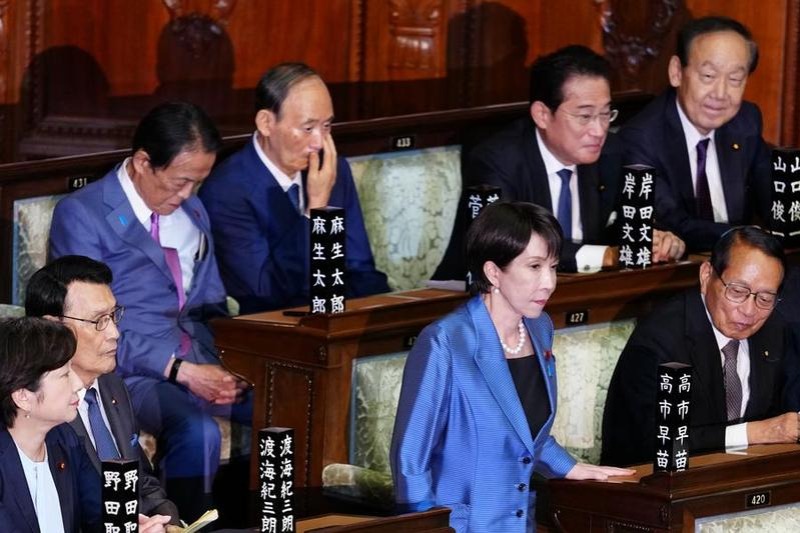Global pacesetters
China-Russia cooperation is a stabilizing and constructive force for world economic governance


The global economy is standing at crossroads. The convergence of unprecedented geopolitical shifts and rapid technological changes is reshaping the international economic order. Unilateralism and protectionism are eroding the rules-based multilateral trading system. Geopolitical tensions are restructuring the global industry and supply chains. The lack of representation and inclusiveness in the international financial architecture is widening the development gap between the Global North and the Global South. In emerging areas such as the digital economy and green transition, the absence of clear rules and governance deficit have left many developing countries vulnerable to marginalization.
The old model of global economic governance can no longer handle these intertwined challenges. The world needs a new framework that is more inclusive, equitable and resilient.
In this shifting landscape, China and Russia's economic and trade cooperation faces a mix of opportunities and challenges.
The first opportunity lies in the structural upgrading of bilateral trade. In 2024, China-Russia trade reached $244.8 billion, marking the 15th consecutive year that China remained Russia's largest trading partner.
In the first nine months of 2025, total trade declined by 9.4 percent year-on-year, and the share of mineral products imported from Russia fell from 77.8 percent in 2024 to 71.9 percent. In contrast, China's exports of machinery, electric equipment, new energy vehicles and auto parts surged. This shift suggests that trade between the two countries is moving beyond resource exchange to more value-added stages along the industrial chains.
In the past two years, Russia has increasingly turned to Chinese technology and machinery to bolster its manufacturing competitiveness. For China, the partnership provides stable energy supplies and an expanding market for high-end manufacturing exports. Together, the two countries are fostering a dynamic and sustainable model of mutual benefit, which is aligned with the global shift toward more sophisticated value chains driven by technological integration and industrial synergy.
Second, energy cooperation, a stabilizing force in bilateral relations, is poised for a strategic upgrade and a greener transformation. In April 2025, the two countries signed an energy cooperation deal, further reinforcing China's position as Russia's largest oil market.
Technological collaboration is also deepening across the entire energy value chain. Chinese equipment manufacturers are playing a major role in the Yamal liquefied natural gas project, where the share of Chinese-made components has risen from 15 percent in the first phase to 45 percent in the third, generating more than $5 billion in equipment exports. The launch of new projects such as Power of Siberia 2 and Arctic LNG 3 is expected to further elevate the strategic partnership in energy cooperation. At the same time, progress in green, renewable energy is steering bilateral energy cooperation toward a more sustainable path.
Third, the rise of high-tech and smart technologies in the global industrial chains presents enormous opportunities for collaboration. In the aerospace industry, China and Russia are jointly developing and launching satellites to enhance their technological capabilities and increase their global competitiveness. The two countries are also promoting artificial intelligence adoption in manufacturing, healthcare, transport and other sectors, through talent exchange and technology sharing, fostering industrial upgrading and innovation.
Fourth, industry and supply chains are expected to become more diversified. China's strong manufacturing capacity and comprehensive industrial system complement Russia's strengths in key components and raw materials. In response to global supply chain risks, the two countries are building closer partnerships to enhance the resilience and security of their economies, as well as to develop more stable and diversified supply chain networks.
However, challenges remain. First, Western sanctions on Russia have created significant uncertainties. Chinese companies working with Russian partners face difficulties in trade settlements and logistics, and some even face the risk of secondary sanctions.
Second, the restructuring of global industry chains has heightened financial market volatility, particularly in currency exchange rates. Although trade between China and Russia is now largely settled in local currencies, fluctuations in foreign exchange can still affect the trade structure and balance. Instability in the exchange rates of the US dollar also influences investor confidence and the cooperation between Chinese and Russian companies.
Third, integrating the two countries' industry chains remains difficult. Differences in industrial structures and levels of development have resulted in mismatched technical standards and inadequate supporting industries. As a result, Chinese companies entering the Russian market often have to bear additional costs to modify or recertify their products to meet local requirements. These barriers raise production costs, complicate market access, and weaken the efficiency of technological exchange and industrial cooperation.
However, despite these challenges, China-Russia economic cooperation has demonstrated remarkable resilience, evident not only in the steady growth of the bilateral trade volume but also in a structural shift toward higher-quality development, driven by broader areas of cooperation, a more balanced trade structure and innovative partnership models. As the two sides enhance government coordination, strengthen the financial infrastructure and harmonize standards, they are also helping to build a more resilient global economic system.
The significance of this cooperation now extends well beyond bilateral relations. It offers what could be called a "China-Russia solution" to improving global economic governance.
First, practicing genuine multilateralism through pragmatic cooperation. The China-Russia partnership is grounded in tangible projects, from energy pipelines to cross-border logistics networks and joint innovation centers. In contrast to exclusive and confrontational "small-circle" alliances, these initiatives strengthen connectivity, drive common development in the region and exemplify multilateralism.
Second, promoting inclusive growth through development-oriented cooperation. By emphasizing technology transfer and local production, cooperation in energy, infrastructure and high-tech sectors helps strengthen their own capacity. At the same time, financial cooperation helps reduce dependence on a single dominant currency and support a more diversified and stable international monetary system.
Third, exploring global governance in emerging sectors through extensive consultation on establishing rules. Guided by the principles of equality and mutual benefit, China and Russia are deepening cooperation in digital infrastructure, cross-border data flows and low-carbon technology standards, working together to establish the rules for shaping governance frameworks and preventing technological monopolies or hegemonism dictating rules.
Fourth, fostering a new model of international relations through systems thinking. The China-Russia partnership seeks to balance trade and investment cooperation with energy, food and financial security. It aligns short-term interests with long-term sustainability by exploring green transition pathways built on traditional energy cooperation. The two countries seek to improve cooperation through multilateral frameworks such as BRICS and the Shanghai Cooperation Organization. This holistic approach to cooperation offers valuable insights for today's fragmented, shortsighted global economic governance system.
China and Russia's economic and trade cooperation has gone beyond the bilateral level. Their model of interaction, practical experience in addressing challenges and shared commitment to cooperation have become a stabilizing and constructive force for the evolving global economic governance landscape.
Going forward, guided by the principles outlined in the Global Development Initiative, the Global Security Initiative, the Global Civilization Initiative and the Global Governance Initiative, China and Russia will continue to jointly advance genuine multilateralism and steer the global economy toward greater openness, inclusiveness, balanced growth and win-win outcomes for all.


Guo Xiaoqiong is a research fellow at the Institute of Russian, Eastern European and Central Asian Studies at the Chinese Academy of Social Sciences. Cai Zhen is an associate research fellow at the Institute of Finance and Banking at the Chinese Academy of Social Sciences. The authors contributed this article to China Watch, a think tank powered by China Daily.
The views do not necessarily reflect those of China Daily.
Contact the editor at editor@chinawatch.cn.


































